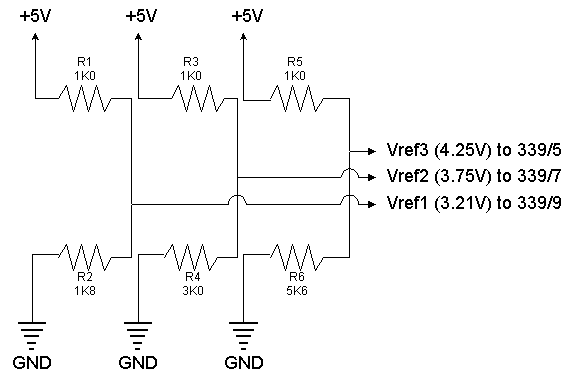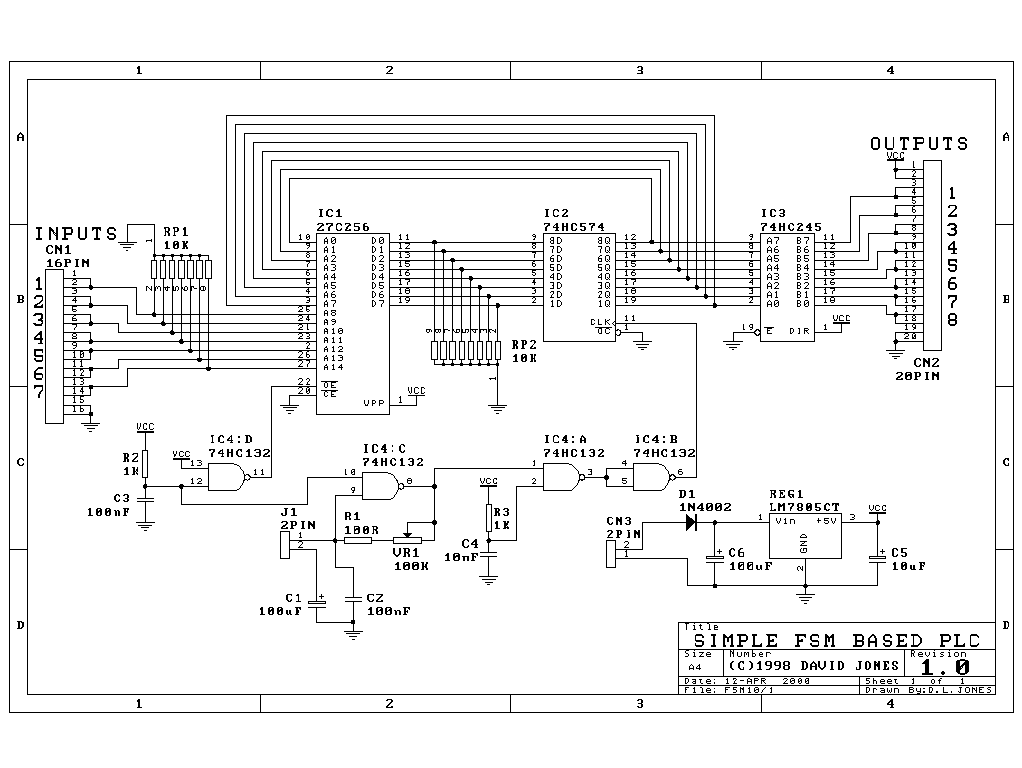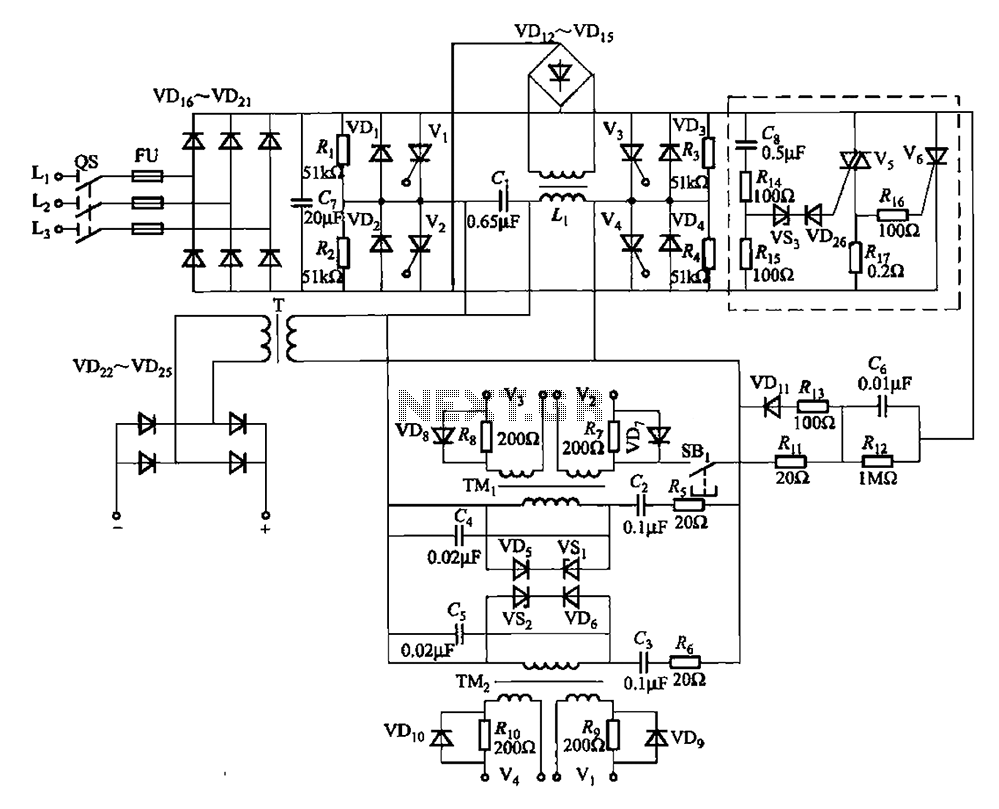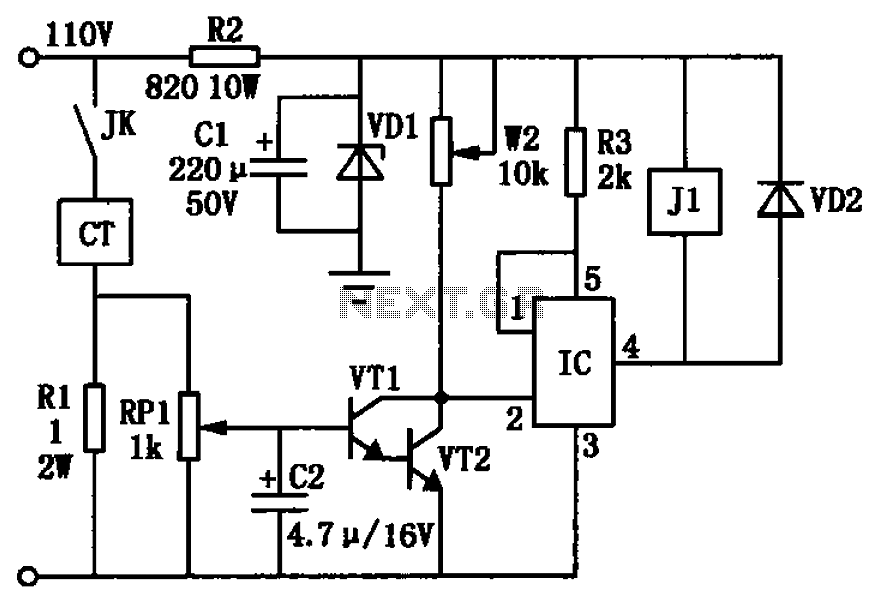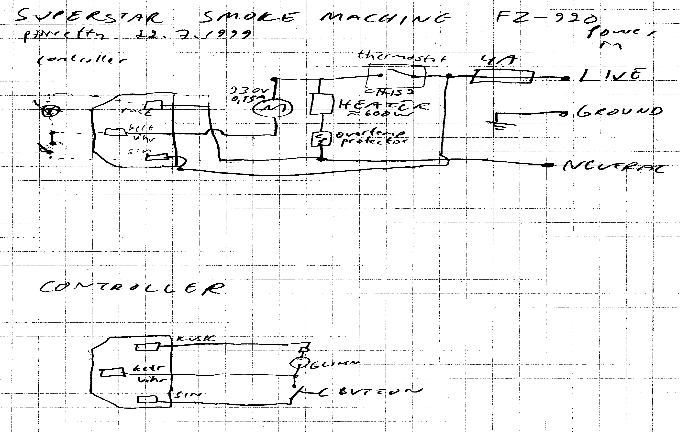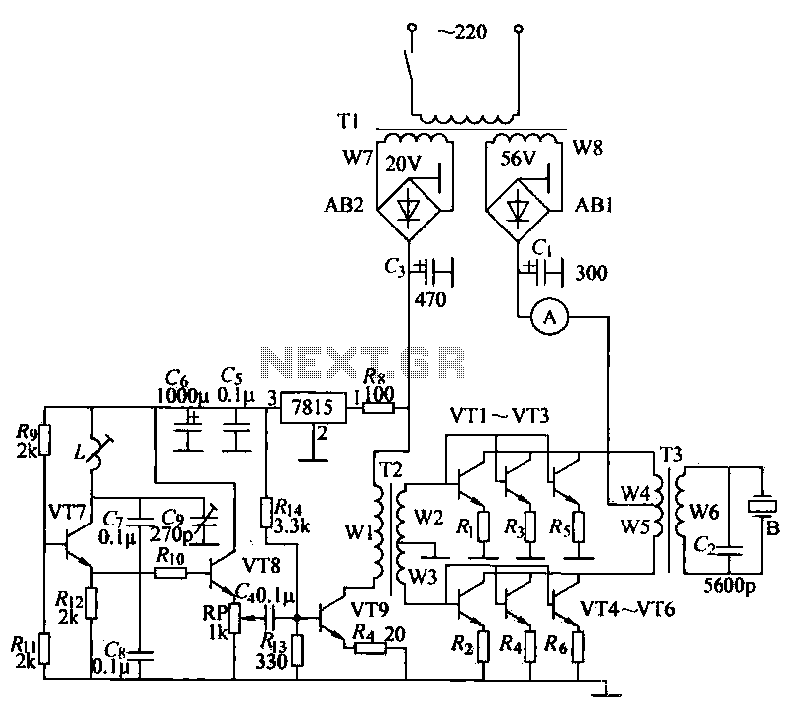
Brain-Wave Machine
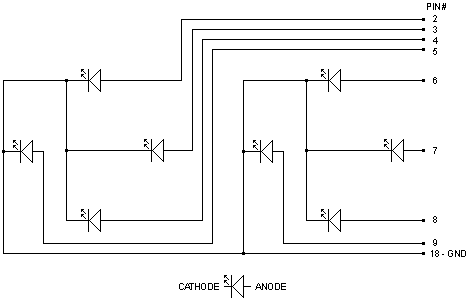
Humans have been using light and sound to achieve altered states of consciousness for thousands of years. Primitive cultures used flickering fires and rhythmic drumming to induce these altered states. Today, you can choose from a wide variety of electronic brain-wave machines which use light and/or sound to alter brain-wave activity. Brain-wave activity ranges from fully awake to deep dreamless sleep.
The described electronic brain-wave machines utilize a combination of auditory and visual stimuli to influence brain-wave patterns, thereby facilitating various states of consciousness. These devices often incorporate several key components to achieve their intended effects.
1. **Microcontroller**: At the core of the device, a microcontroller processes inputs and generates output signals. It can be programmed to produce specific frequencies of light and sound that correspond to desired brain-wave states, such as alpha, beta, theta, and delta waves.
2. **Light Emitting Diodes (LEDs)**: The visual component typically consists of LEDs that emit light at specific frequencies and patterns. The frequency of the light can be modulated to create flickering effects that are synchronized with the auditory component. This synchronization is critical for achieving the desired brain-wave entrainment.
3. **Audio Output**: The auditory component may include speakers or headphones that deliver sound frequencies, often in the form of binaural beats or isochronic tones. Binaural beats are created by playing two slightly different frequencies in each ear, which the brain perceives as a single new frequency. Isochronic tones are single tones that turn on and off at specific intervals, providing a more pronounced stimulus.
4. **User Interface**: A user-friendly interface allows individuals to select different programs or settings based on their desired outcome, such as relaxation, focus, or sleep induction. This interface may include buttons, knobs, or a touchscreen display.
5. **Power Supply**: The device requires a reliable power source, which can be provided through batteries or an AC adapter, depending on the design and intended use.
6. **Safety Features**: Many modern brain-wave machines incorporate safety features to prevent overstimulation, such as automatic shut-off timers or intensity control settings to ensure the user’s comfort and safety during use.
The effectiveness of these machines is often supported by research in neurofeedback and cognitive therapy, where users can learn to control their brain-wave activity through feedback provided by the device. The integration of light and sound in a controlled manner presents a non-invasive method for exploring altered states of consciousness, offering potential benefits for relaxation, meditation, and cognitive enhancement.Humans have been using light and sound to achieve altered states of consciousness for thousands of years. Primitive cultures used flickering fires and rythmic drumming to induce these altered states. Today, you can choose from a wide variety of electronic brain-wave machines which use light and/or sound to alter brain-wave activity.
Brain-wave activity ranges from fully awake to deep dreamless sleep. 🔗 External reference
The described electronic brain-wave machines utilize a combination of auditory and visual stimuli to influence brain-wave patterns, thereby facilitating various states of consciousness. These devices often incorporate several key components to achieve their intended effects.
1. **Microcontroller**: At the core of the device, a microcontroller processes inputs and generates output signals. It can be programmed to produce specific frequencies of light and sound that correspond to desired brain-wave states, such as alpha, beta, theta, and delta waves.
2. **Light Emitting Diodes (LEDs)**: The visual component typically consists of LEDs that emit light at specific frequencies and patterns. The frequency of the light can be modulated to create flickering effects that are synchronized with the auditory component. This synchronization is critical for achieving the desired brain-wave entrainment.
3. **Audio Output**: The auditory component may include speakers or headphones that deliver sound frequencies, often in the form of binaural beats or isochronic tones. Binaural beats are created by playing two slightly different frequencies in each ear, which the brain perceives as a single new frequency. Isochronic tones are single tones that turn on and off at specific intervals, providing a more pronounced stimulus.
4. **User Interface**: A user-friendly interface allows individuals to select different programs or settings based on their desired outcome, such as relaxation, focus, or sleep induction. This interface may include buttons, knobs, or a touchscreen display.
5. **Power Supply**: The device requires a reliable power source, which can be provided through batteries or an AC adapter, depending on the design and intended use.
6. **Safety Features**: Many modern brain-wave machines incorporate safety features to prevent overstimulation, such as automatic shut-off timers or intensity control settings to ensure the user’s comfort and safety during use.
The effectiveness of these machines is often supported by research in neurofeedback and cognitive therapy, where users can learn to control their brain-wave activity through feedback provided by the device. The integration of light and sound in a controlled manner presents a non-invasive method for exploring altered states of consciousness, offering potential benefits for relaxation, meditation, and cognitive enhancement.Humans have been using light and sound to achieve altered states of consciousness for thousands of years. Primitive cultures used flickering fires and rythmic drumming to induce these altered states. Today, you can choose from a wide variety of electronic brain-wave machines which use light and/or sound to alter brain-wave activity.
Brain-wave activity ranges from fully awake to deep dreamless sleep. 🔗 External reference
